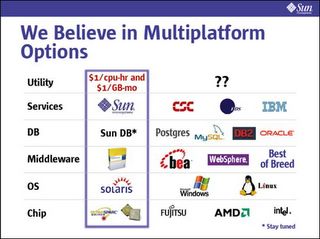Background first: BDA has announced a grade separator at South End Circle. And, curiously enough, the grade separator's arms will span South End road and the road leading to Madhavan Park. Doesn't make sense? Well, as residents & shopkeepers in the vicinity of south end circle say, the traffic at this "gateway to the south" is quite manageable and hasn't gone out of hand compared to, say, Diary circle or Bannerghatta road. Let’s assume, for a moment, that the locals don't have an iota of an idea about the traffic situation and the BDA is genuinely concerned about the citizens' welfare. Now, why would you have two arms of the grade separator on 2 of the calmest roads that lead to the junction? Why have the grade separator at all then? The answer to that lies in the answer to why the National College flyover was "conceived": It turns out that the private contractors involved in civil works are fast running out of projects. And there won't be any new projects coming up unless an artificial need for such projects is created. But, who is to decide whether a certain project is indeed required? Well, the civic bodies are wise enough to decide what's "good" for the people (and their own pockets), aren't they? That's why we're seeing a deluge of flyovers and grade separators being "synthesized", "planned" and executed. Of course, the contractors compensate the approving bodies appropriately (goes without saying). Obviously, since the amount of money involved is so huge, the flyover juggernaut rolls on inexorably - like it did in case of the national college flyover. The college itself, once surrounded by a verdant fortress, now lies partly buried under several inches of dirt and dust. Feeling powerless, and finding myself incapable of doing anything to save those trees from certain destruction, I rang up Suresh Heblikar last evening, looking for some guidance. He was kind enough to spend 15 mins explaining various possibilities and listing out options. Some take-home points at the end of the discussion-
- There is NO formal means of tackling this menace. You cannot waste your time bringing in stay orders from the court.
- Be specific – address the civic org that has approved this project. (The BDA in this case.) Shouting yourself hoarse on M.G road will have little impact.
- Make yourself heard –
- The least you can do is write to local papers about this. The Kannada papers are more vociferous when it comes to protesting for the environment and are more likely to publish your letter.
- Gather your friends/ other likeminded people and stage a protest. (You’ll first have to shed all your inhibitions to do that, though.) Try to get the press involved. Maybe invite a few reporters over to the place where you plan to stage the protest. In the past, Mr.Heblikar has helped resident groups get easier access to the press.
- If option b is not to your liking, gather residents of your area and organize a signature campaign. Submit the memorandum to the “Babu” involved.
- You do NOT have to belong to the affected area or be a native of Bangalore to lodge a protest. Remember, destruction of the environment affects every one of us, no matter which place we belong to. Mr.Heblikar gave a very good example of how a few Bengalis living around Bannerghatta road decided to protest the condition of the road and how it resulted in increased dust levels, reduced visibility around their apartments, and even induced respiratory disorders in their children. They approached him for guidance and he helped draw attention to their cause. When I expressed surprise over this incident, he said, “We wait for a messiah to appear out of nowhere and rescue us. We seldom take the initiative. We need to change the attitude and take ownership. It’s for our own good.” That’s something that we ALL need to bear in mind.
And you wouldn’t be hampering “development” by protesting against these project (the BDA loves to use this to respond to activists). We can do without such development in most cases. Would you prefer to wait the extra 10 minutes at the traffic signal (you might have to wear a mask then) or wake up gasping for breath every morning (what with all the trees gone) and wear a mask all day long? And I haven’t even started talking about the beauty that these trees lend to our city. In fact, they define (or defined?) our identity.
So, please, whatever your means, spend a few minutes of your spare time for a worthy cause. Make your voice heard and protect our green cover. Every individual does matter. Every person makes a difference. And remember, it’s for our own good.
First stop – The south end circle grade separator.
Some information that might help –
1) ToI editor – lettersbg@indiatimes.com
2) Deccan Herald – editor@deccanherald.com
3) Mr.Suresh Heblikar - 26553422


